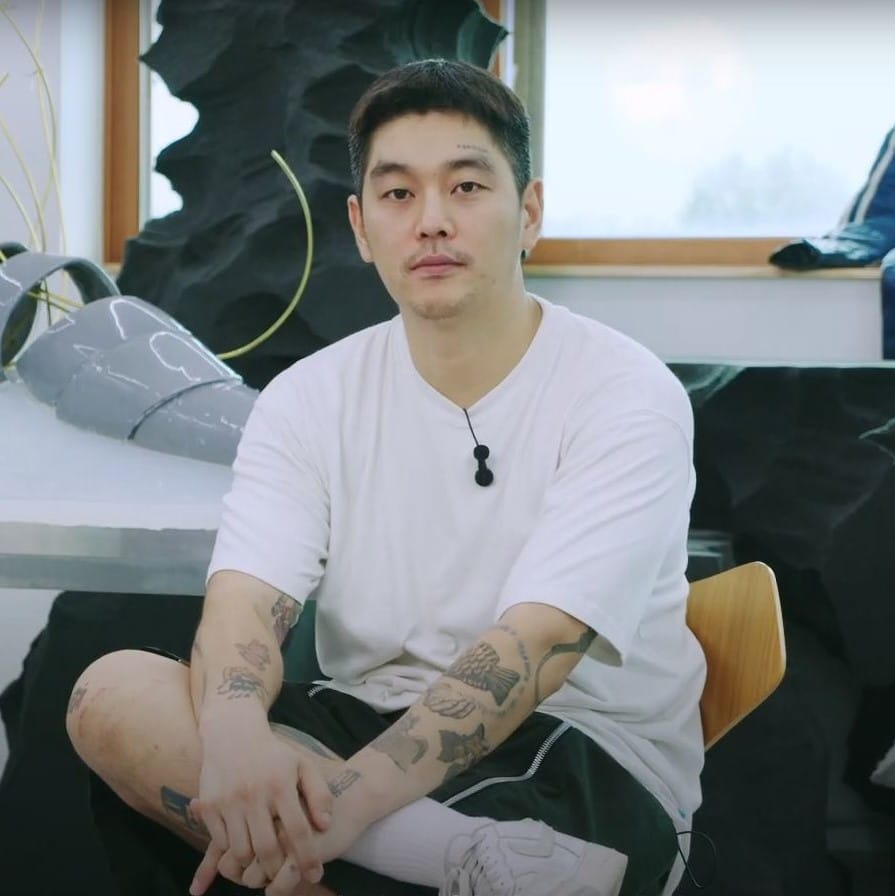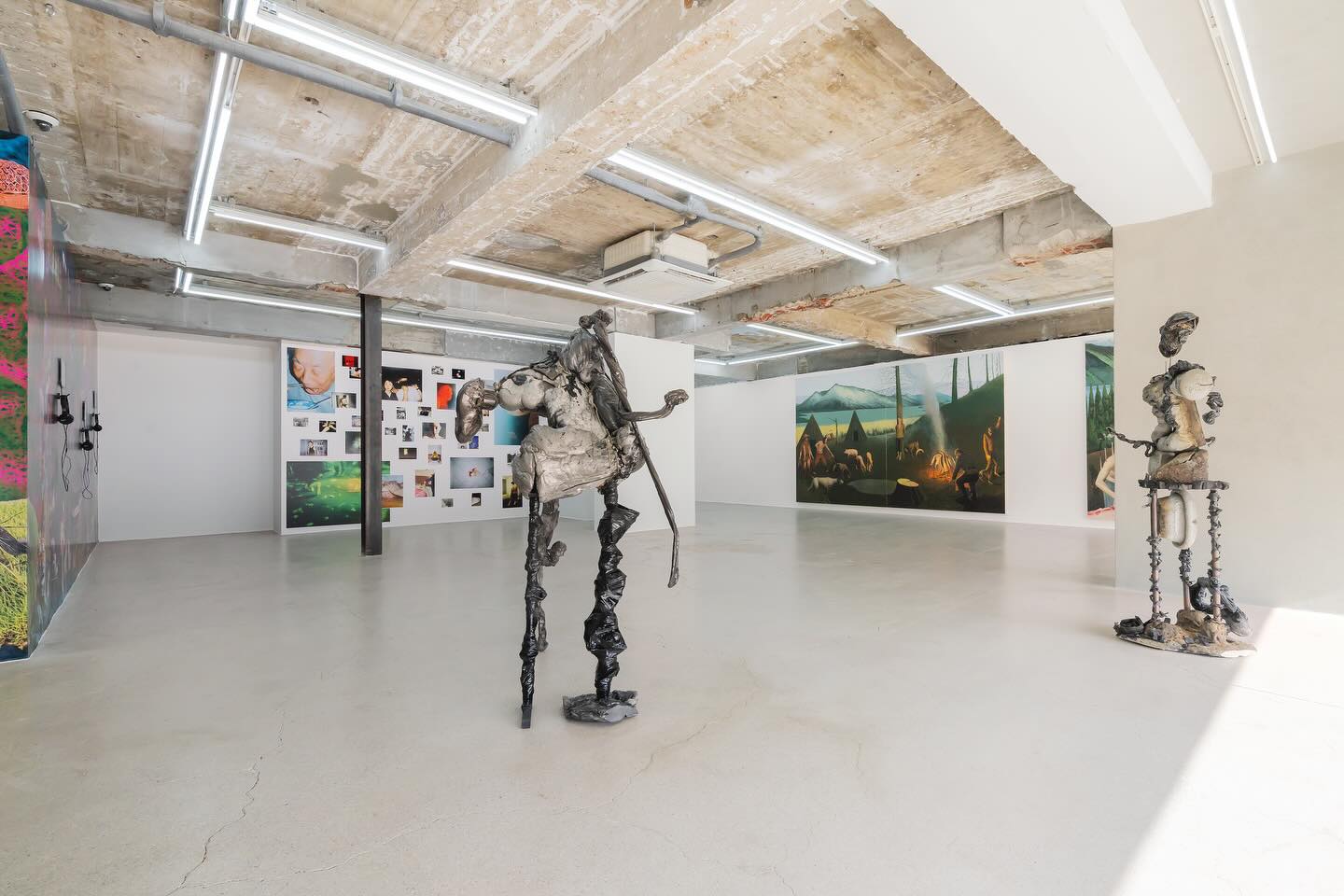 Exhibition title image of "Korean Diaspora Ricepaper Airplane" at Incheon Art Platform, Incheon, Korea. Courtesy of Incheon Art Platform.
Exhibition title image of "Korean Diaspora Ricepaper Airplane" at Incheon Art Platform, Incheon, Korea. Courtesy of Incheon Art Platform.The Korean government’s oversight of immigration officially began in 1902, and since then, its immigration history has been written in response to the nation’s cataclysmic timeline in the modern era. During the Japanese colonial period (1910–1945), the labor migration began when many Koreans traveled across the Gando, Maritime Provinces, and the Pacific Ocean to reach Hawaii. Children orphaned by the Korean War (1950–1953) had to leave the country for adoption, and after the enactment of the Overseas Emigration Act in 1962, miners and nurses were sent to Germany, and engineers were sent to Vietnam and the Middle East to help the country’s economic growth.
Incheon, a city bordering Seoul that has long served as a transportation hub for the country, is holding various events to commemorate 120 years of Korea’s immigration history. And at the Incheon Art Platform, an artist residency and art complex, an affiliated exhibition, Korean Diaspora Ricepaper Airplane, is taking place from September 30 to November 27. The exhibition’s title was inspired by the American novel A Ricepaper Airplane by Gary Pak, a third-generation Korean immigrant based in Hawaii.
 Kimsooja, 'A Beggar Woman-Cairo,' 2001, Single-channel video, color, stereo sound. SeMA collection. Image provided by SeMA.
Kimsooja, 'A Beggar Woman-Cairo,' 2001, Single-channel video, color, stereo sound. SeMA collection. Image provided by SeMA.Originally, the term “diaspora” referred to Jewish people living outside of Israel. Nowadays, it is widely used to refer to any people who are dispersed from their original homelands, such as people expelled from their home countries, political refugees, immigrants, and ethnic minorities. After the turn of the second millennium, an ever-increasing number of contemporary migrations are based on the individual’s free will in various forms and circumstances, whereas in the past, the majority of migrations happened against the individual’s will.
The Korean Diaspora Ricepaper Airplane is curated by Lee Taeho, a former art professor at Kyung Hee University. Curator Lee has brought together eighteen contemporary artists of Korean descendants from eight countries, including Korea, Japan, Germany, France, Denmark, Australia, Canada, and the United States.
The participating artists who work on paintings, photographs, installations, videos, animations, sculptures, and drawings, include Gala Porras-Kim (LA, USA), Glenn Morey, Julie Morey (Denver, Colorado, USA), Kimsooja (Seoul, Korea), Kim Heejoo (Connecticut, USA), Daphné Nan Le Sergent (Paris, France), Min Yong Soon (LA, USA), Park Yooah (Seoul, Korea/New York, USA), Bahc Yiso (Seoul, Korea/New York, USA), Nam June Paik (Seoul, Korea/New York, USA), Yoon Jin-me (Vancouver, Canada), Lee Kakyoung (Brooklyn, USA), Lee Young Joo (Cambridge-LA, USA), Lee Hyun-Hee (Sydney, Australia), Jane Jin Kaisen (Copenhagen, Denmark), Choi Sung Ho (New York, USA), kate-hers RHEE (Berlin, Germany), and Ha Jhonnam (Seoul, Korea/Nagano, Japan).
 Bahc Yiso, "Exotic-Minority-Oriental," 1990, color photograph and enamel paint, 76×61㎝. Image provided by Incheon Foundation For Arts & Culture.
Bahc Yiso, "Exotic-Minority-Oriental," 1990, color photograph and enamel paint, 76×61㎝. Image provided by Incheon Foundation For Arts & Culture.As various forms of immigration exist today, the works of the participating artists vary greatly in form and content. Nevertheless, the featured works can fall into certain categories: “a certain cultural memory of the motherland (Nam June Paik, kate-hers RHEE, etc.), political/social concerns and compassion (Choi Sung Ho, Min Yong Soon, Park Yooah, etc.), the sentiment of sadness and longing (Yoon Jin-me, Jane Jin Kaisen, Ha Jhonnam, Lee Hyun-Hee, etc.), and anger and accusations against history (Glenn Morey, Julie Morey, Lee Kakyoung, and Kim Heejoo),” according to Director Lee Taeho.
These Korean descendants left their home country for various reasons and at various times. Their life in foreign lands has led them to become minorities and strangers to the locals, making them question their national identity. In particular, four of the eighteen participating artists share the experience of being adopted into another country during their early childhood in the 1980s, which would have undoubtedly caused them to question their individual selves as well as what it means to be a Korean.
Director Lee stated, “It would be more meaningful to listen to the stories of international artists of Korean descent who are residing abroad rather than looking into the meaning of ‘diaspora’ from the perspective of the artists based in Korea. Also, I thought this would be a great opportunity to introduce artists who have not received much attention in the country.”
This exhibition will be an opportunity to examine Korea’s current reality through the eyes of both foreigners and natives. It will also provide an opportunity to examine the current situation in Korea from a global perspective and address issues concerning the Korean diaspora and its cultural characteristics.























